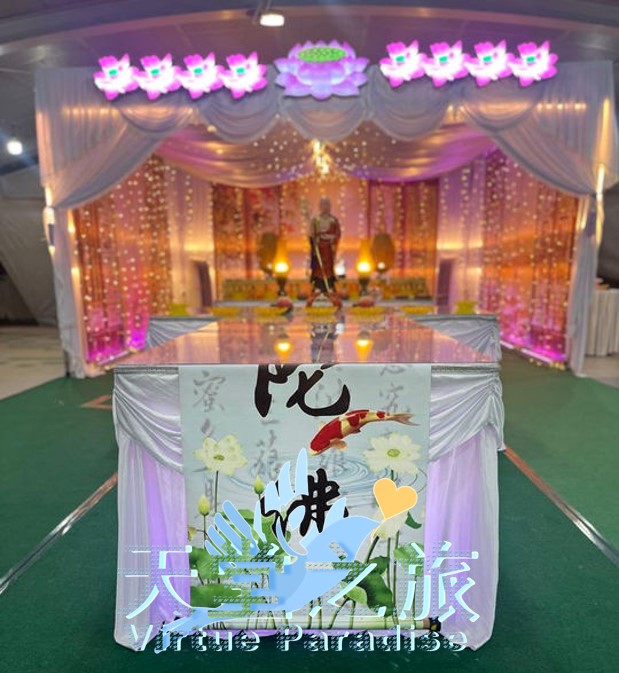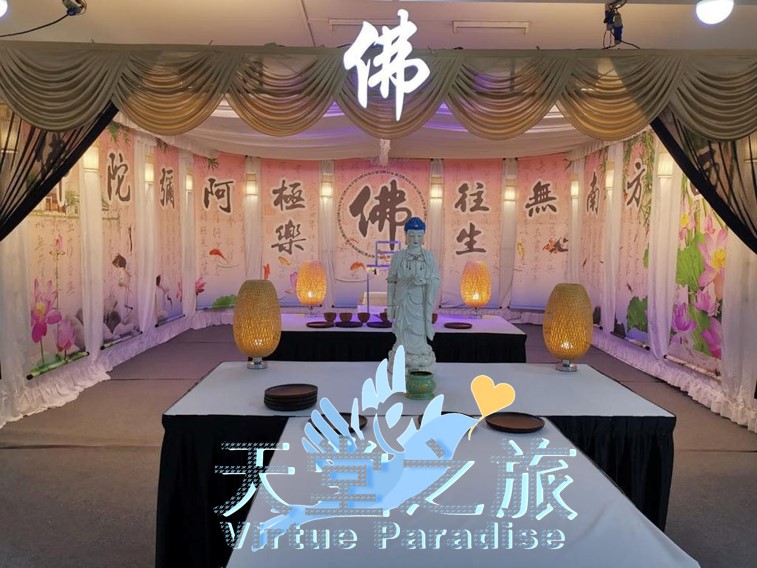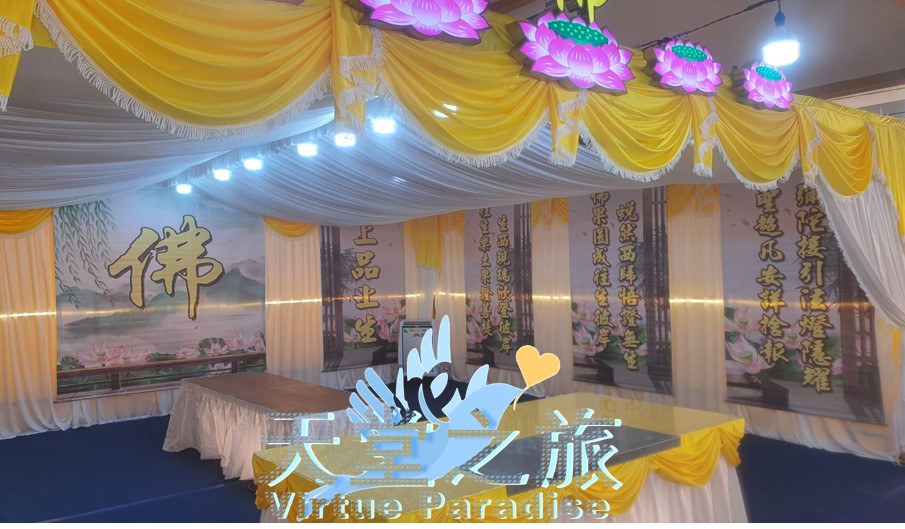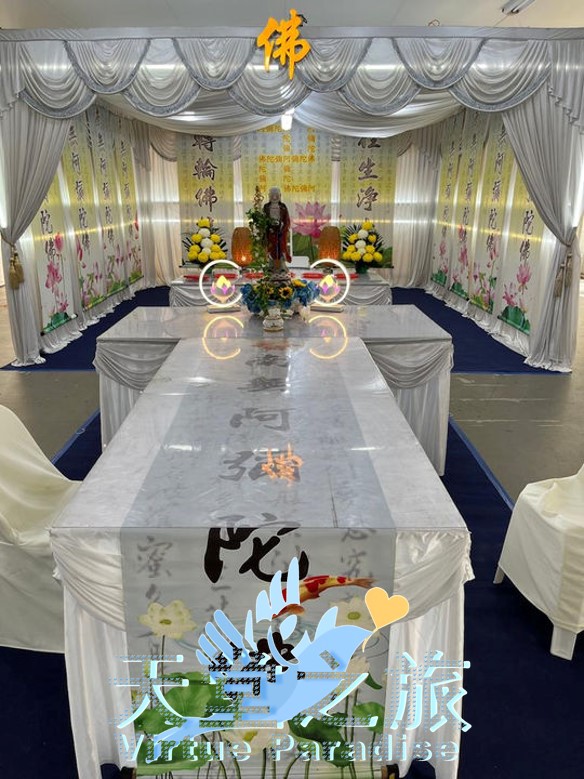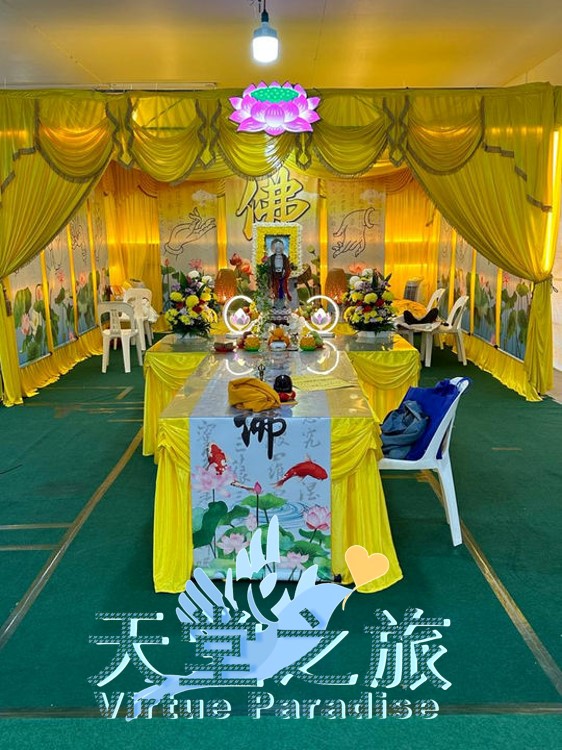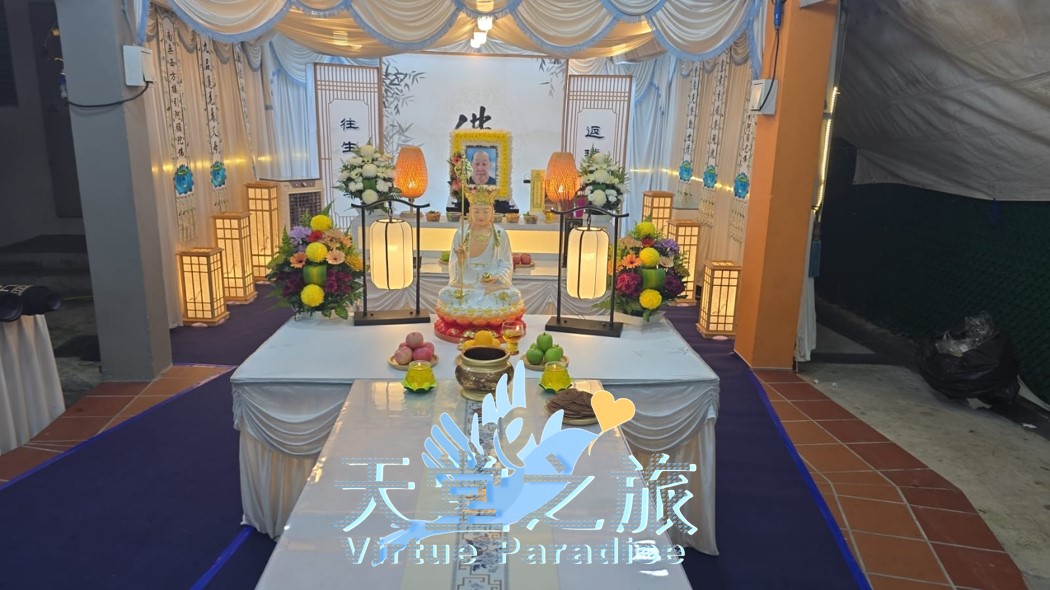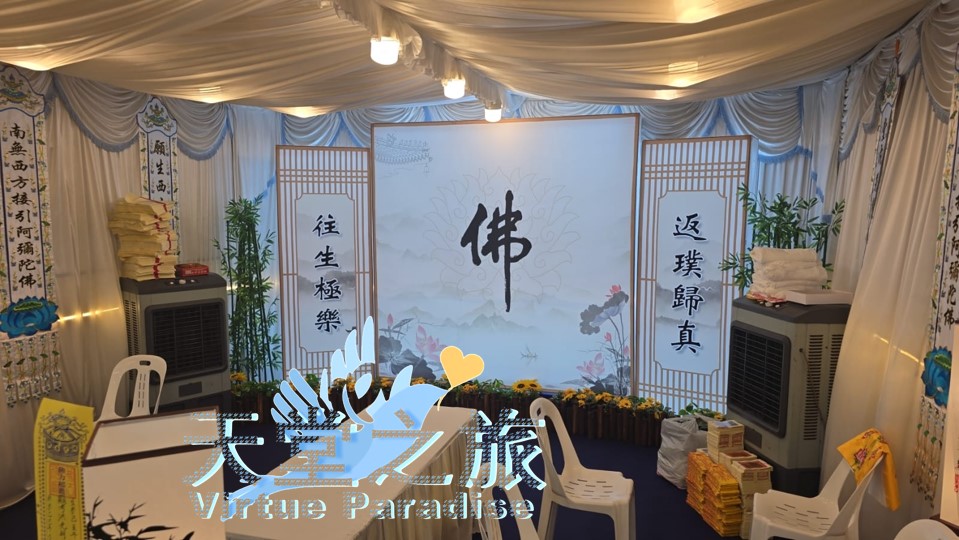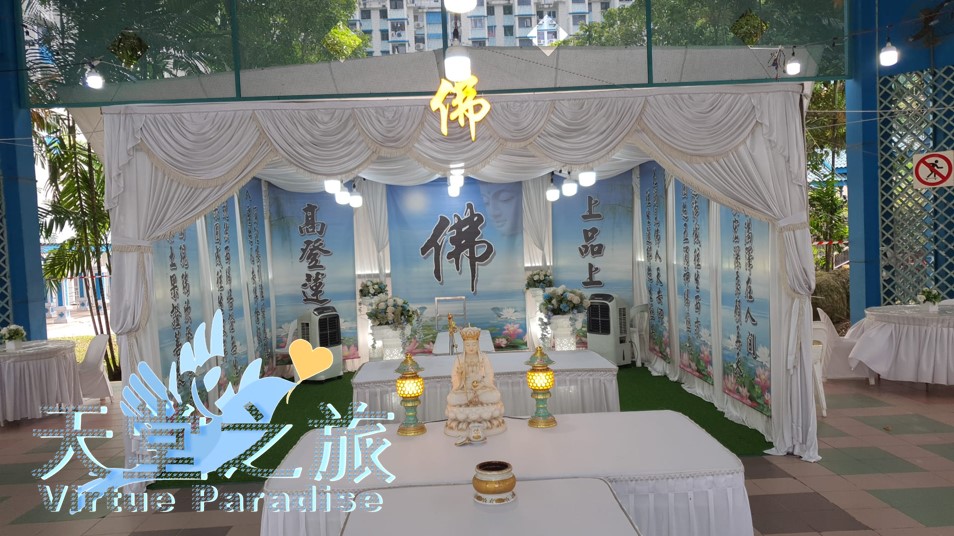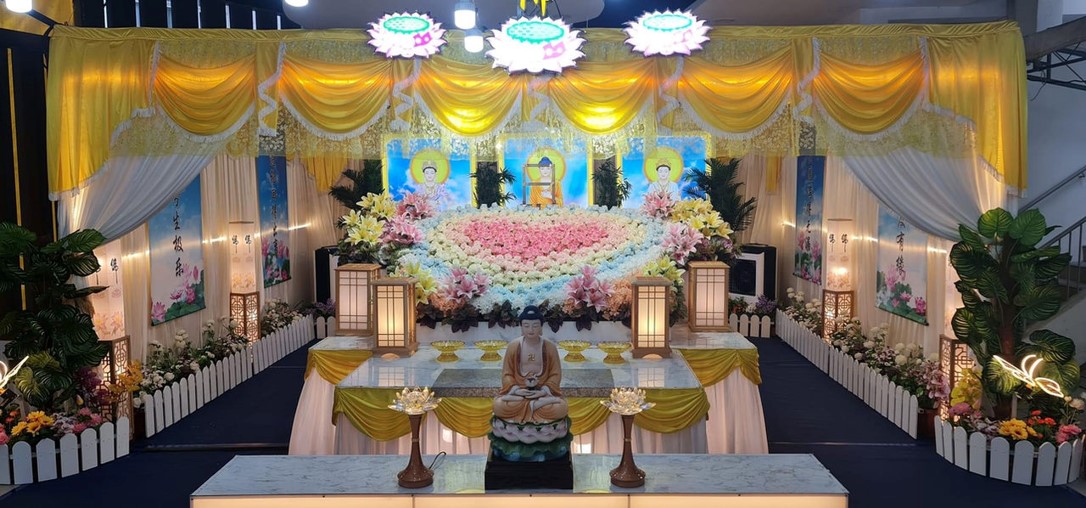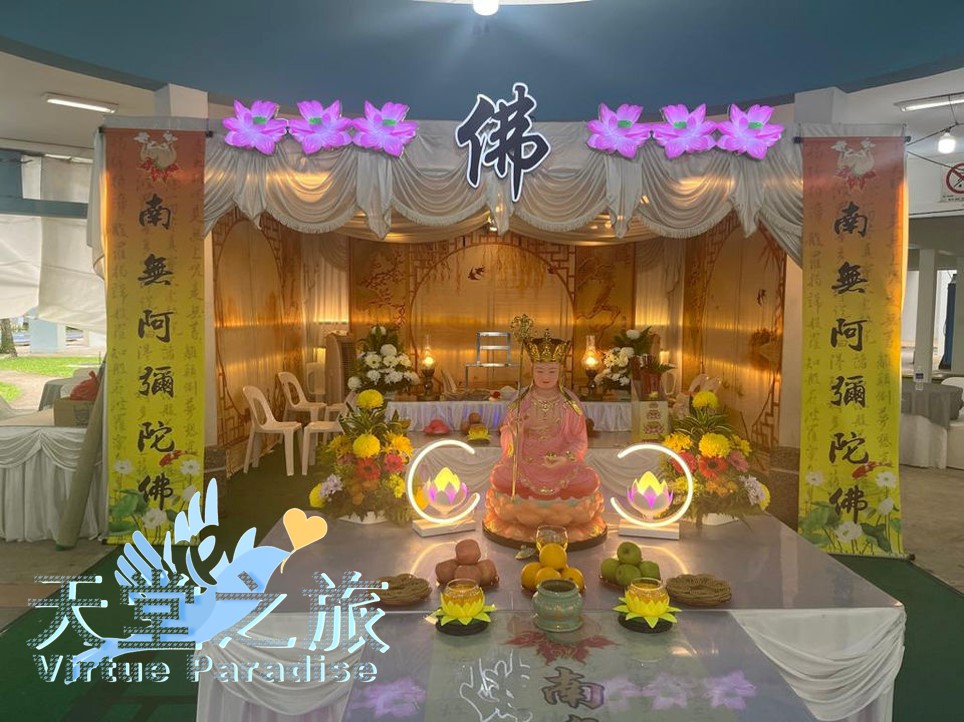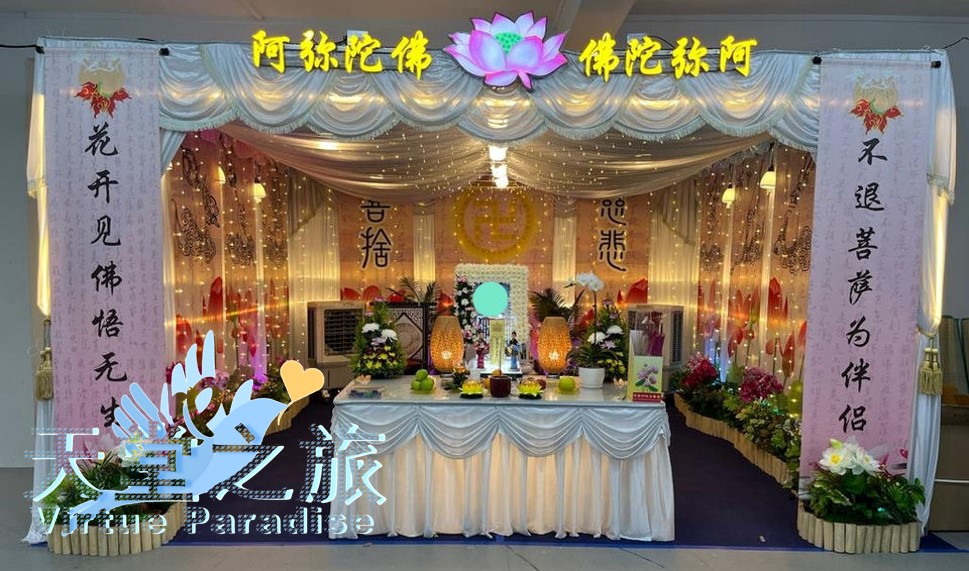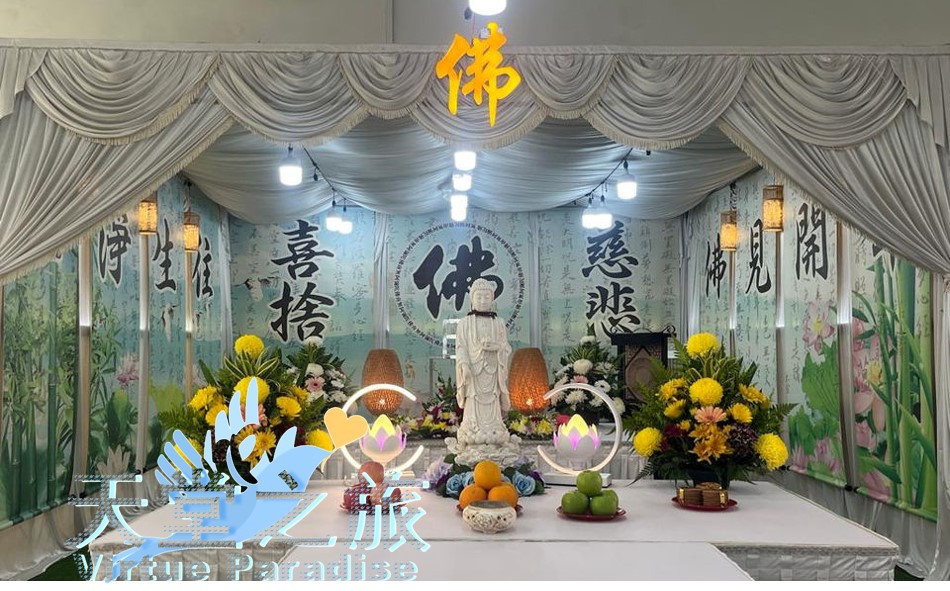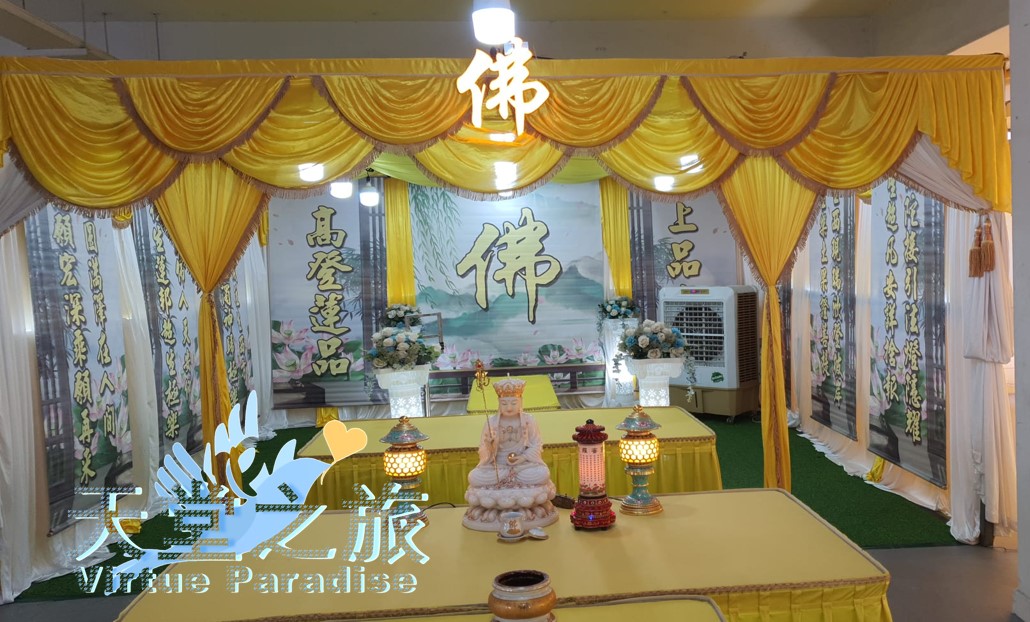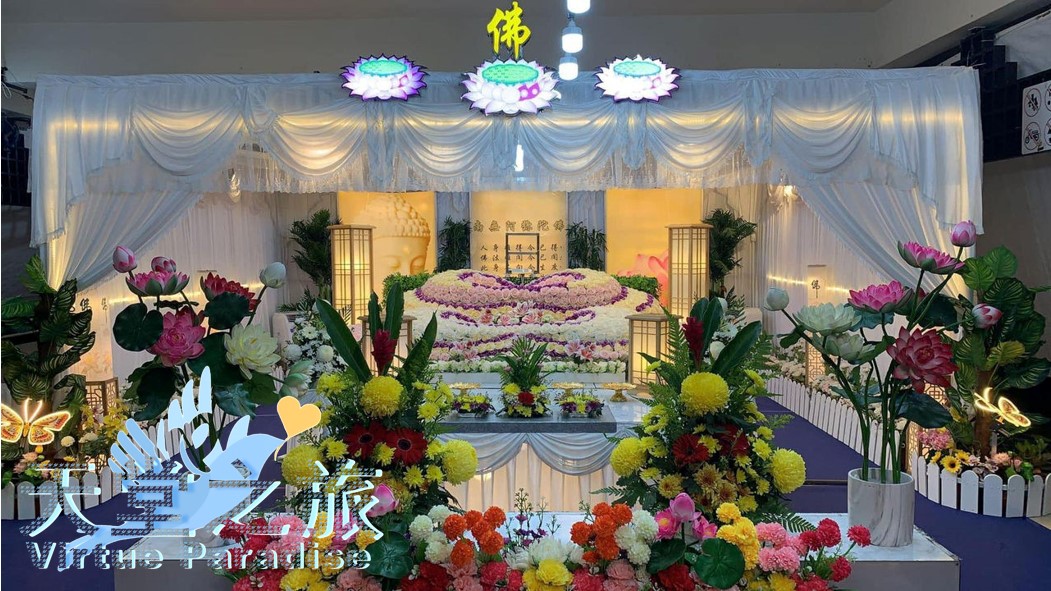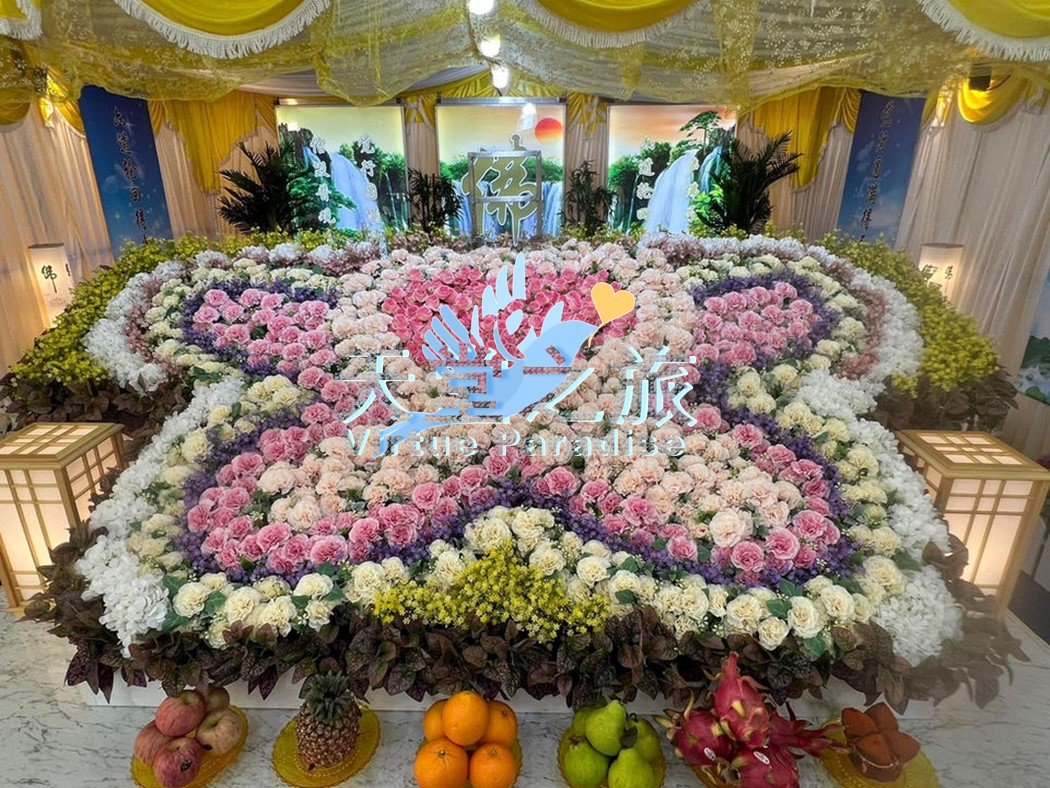Absolutely! Buddhist funeral services are rich in symbolism and rituals designed to honor the deceased, support their journey after death, and provide comfort to the family.
Buddhist funerals are less about mourning endlessly and more about helping the deceased and cultivating positive karma, compassion, and mindfulness among the living.
Here's a step-by-step guide of a typical Buddhist funeral ceremony, showing the sequence from death to post-funeral rituals. I'll focus on the most common practices in Mahayana Buddhism (like in China, Singapore, and Japan), but many elements are similar across traditions:
Step 1: Immediately After Death
-
The body is respectfully washed and dressed, often in white or simple clothing.
-
A Buddhist altar is prepared with:
-
Buddha statue or image
-
Incense and candles
-
Flowers
-
Offerings of fruits or food
-
-
Family and close friends may begin chanting sutras quietly to help guide the deceased's spirit.
Step 2: Wake / Viewing
-
Usually held for 1-3 days before the funeral.
-
Attendees pay respects by:
-
Bowing to the altar
-
Lighting Incense sticks
-
Offering symbolic gifts (money, paper items, or food)
-
-
Monks may perform chanting services and prayers during the wake.
Step 3: Funeral Ceremony
-
Typically led by one or more monks.
-
Key rituals may include:
-
Opening Prayers - Invoking the Buddha and Dharma to bless the deceased.
-
Chanting sutras - Such as the Amitabha Sutra or Heart Sutra.
-
Offerings - Incense, water, flowers, and symbolic food for the deceased.
-
Eulogy or reflection - Family or monks share teachings about impermanence and compassion.
-
Merit Transfer - Dedicated prayers and offerings to benefit the deceased's next rebirth.
-
Step 4: Cremation or Burial
-
Cremation is common in East Asia; ashes are collected afterward.
-
Burial is less common but still practiced in some Buddhist communities.
-
Ashes may be:
-
Placed in an urn for home or columbarium storage
-
Scattered at a sacred site (river, mountain, or temple grounds.)
-
Step 5: Post-Funeral Memorials
-
Families often observe ritual days to support the deceased's spirit:
-
7th day after death - First major ritual
-
49th day - Significant ritual marking end of intermediate state (bardo)
-
100th day, 1st year, and subsequent anniversaries - Offerings, prayers, and chanting to generate merit
-
-
Regular offerings of incense, food, charity continue to honor ancestors and accumulate merit.
Step 6: Ongoing Remembrance
-
Families maintain a home altar or visit the grave/columbarium during festivals like:
-
Qing Ming (Tomb-Sweeping Day)
-
Hungry Ghost Festival
-
-
These acts are expressions of respect and help maintain connection with the deceased.
Summary
Buddhist funerals emphasize:
-
Respect and Compassion for the deceased
-
Merit-making to aid the next life
-
Reflection on impermanence to guide the living


